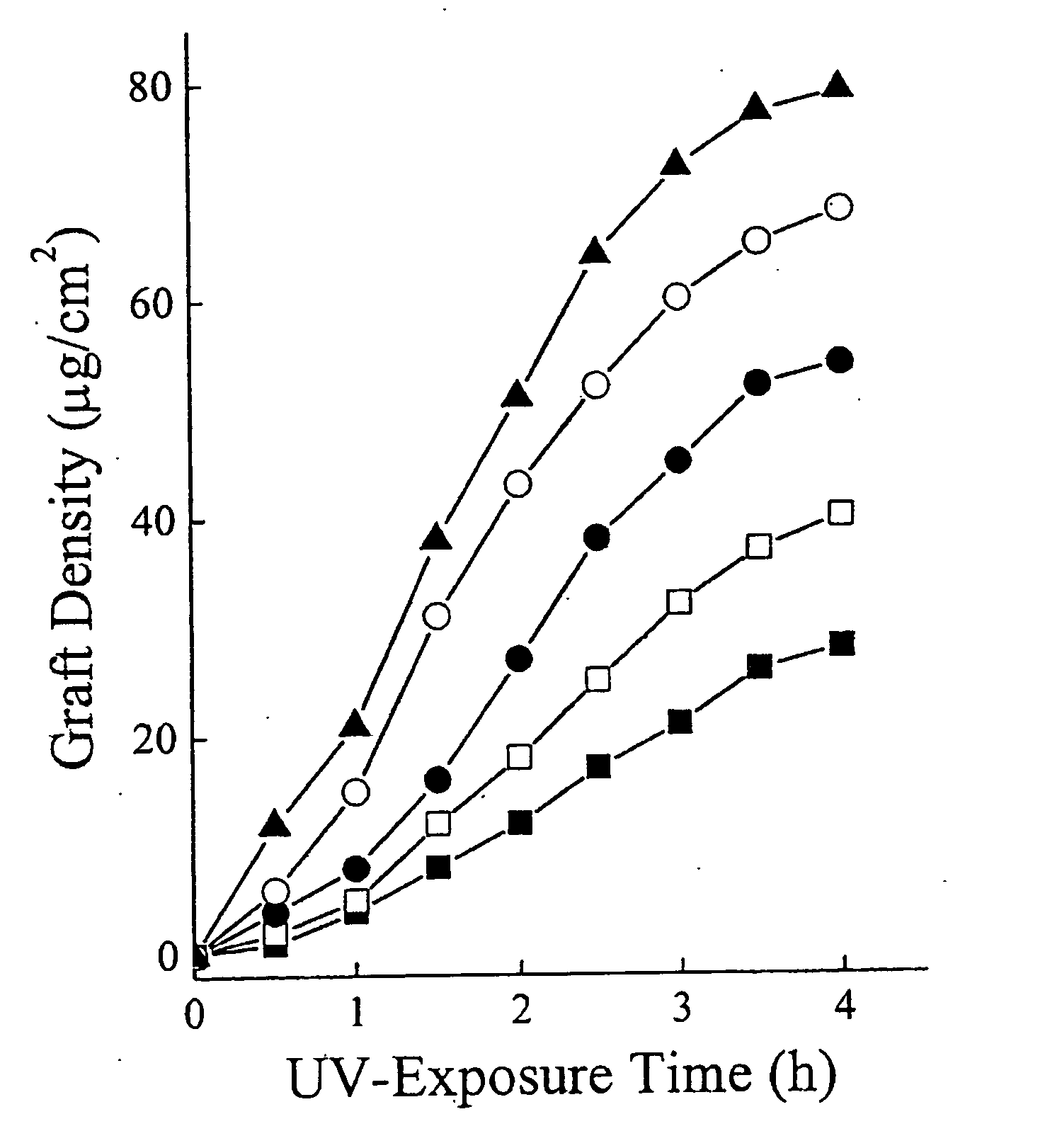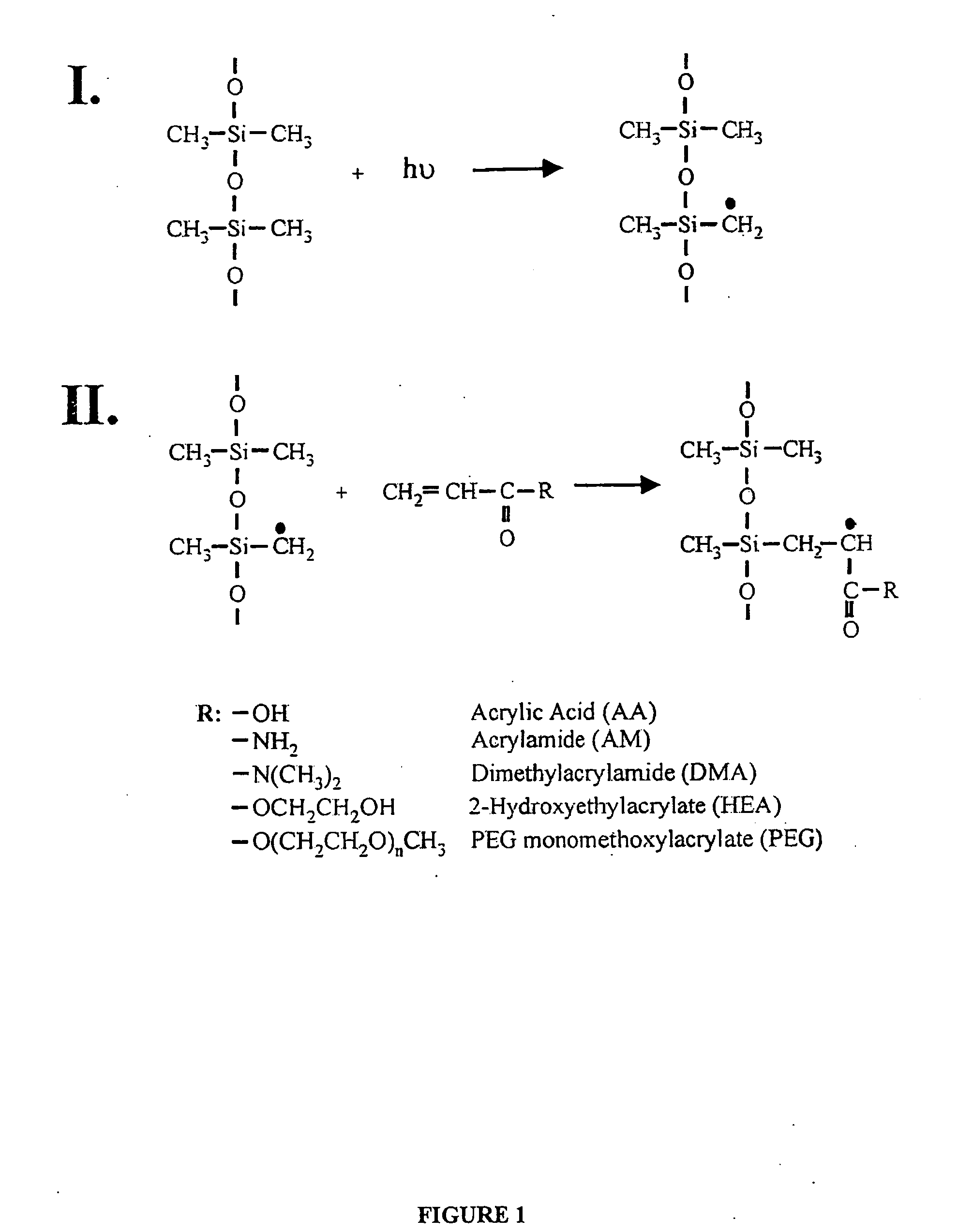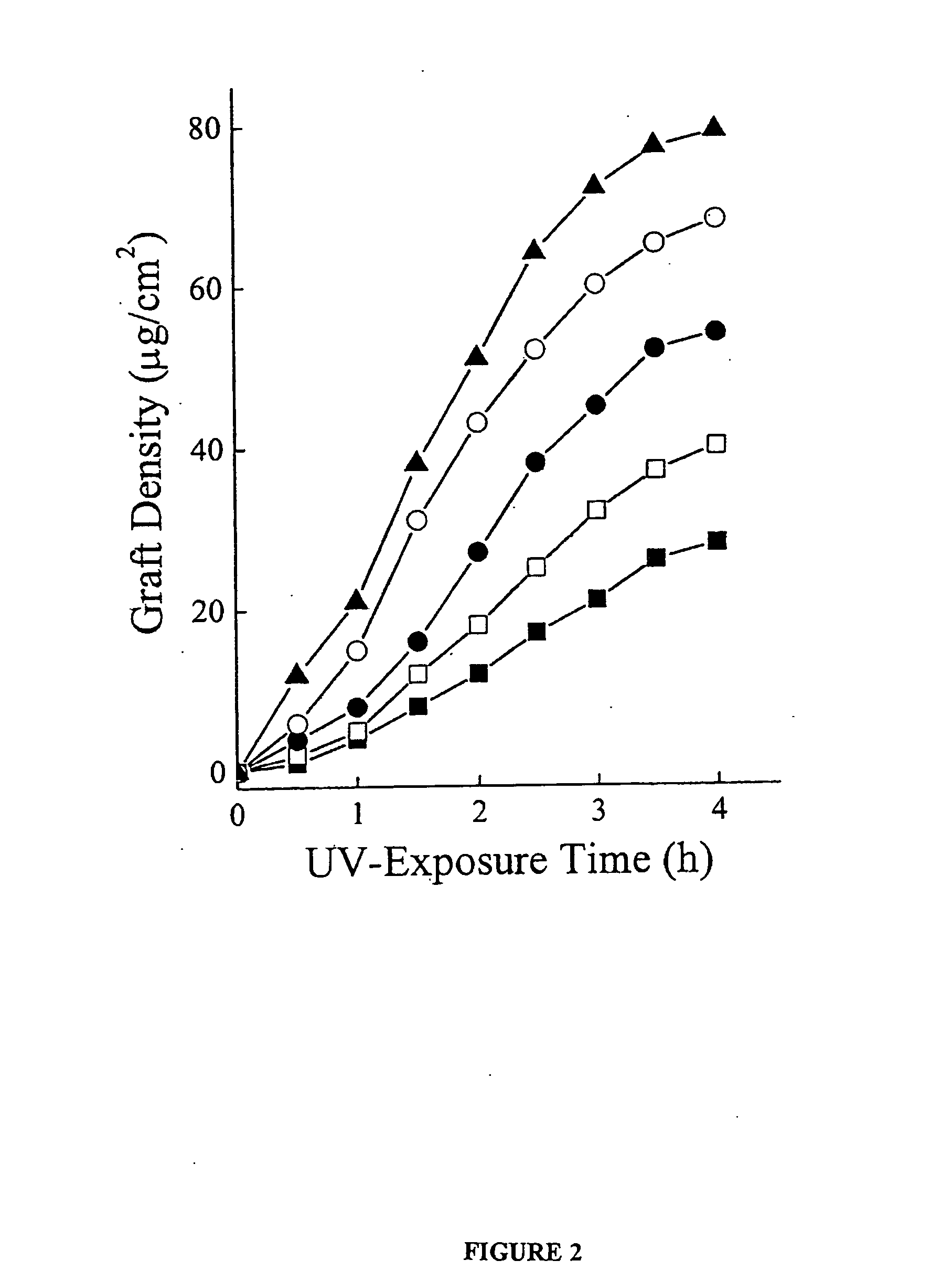Chemical modifications to polymer surfaces and the application of polymer grafting to biomaterials
a polymer grafting and polymer technology, applied in the field of chemical modifications to polymer surfaces and the application of polymer grafting to biomaterials, can solve the problems of inability to achieve high-quality polymerization, limited functionality, and inability to meet the requirements of difficult and/or expensive procedures, so as to prevent excessive free radical formation, enhance the quality and physical parameters of the graft polymer, and eliminate excessive polymerization in solution
- Summary
- Abstract
- Description
- Claims
- Application Information
AI Technical Summary
Benefits of technology
Problems solved by technology
Method used
Image
Examples
example 1
Surface Grafting of Homogenous Polymer Compositions onto PDMS
[0042] To modify the surface properties of PDMS devices a variety of monomers are UV-grafted onto the PDMS surface. With this method, attachment of polymers can be accomplished in a single step. The monomers are selected to be hydrophilic since this is an attribute of most surfaces resistant to protein adsorption (compared to hydrophobic surfaces) (19-21). The monomers, AA, AM, HEA, PEG, and DMA, are also selected based on their likely ease of attachment, past usage in biocompatible devices, and display of different functional groups. Ikada, Y. Biomaterials 1994, 15, 725-36; Belanger, M. C.; Marois, Y. J. Biomed. Mater. Res. (Appl. Biomater) 2001, 58, 467-77; Jagur-Grodzinski, J. Heterogeneous Modification of Polymers, John Wiley and Sons: New York, 1997; Chapters 7, 8. PDMS films are immersed in aqueous solutions containing the monomer and then irradiated with a mercury lamp. NaIO4 is included in the monomer solution to ...
example 2
Surface Grafting of Heterologous Polymer Composition onto PDMS
[0054] As noted above, the physical parameters of a surface polymer graft may be altered to achieve selected properties in accord with the intended use of the substrate and monomer combination. For example, the use of a substrate combined with a graft comprised of mixed monomers, with and without cross-linking agents, develops fast, high quality separations of biologically relevant molecules on PDMS micro devices. In this example, the surface properties of polymerized coatings composed of a single neutral monomer (PEG), a neutral and a negative monomer (PEG:AA), or a neutral, negative, and cross-linking monomer (PEG:AA:poly(ethylene glycol) diacrylate) (DiPEG)) were evaluated by measuring the polymer graft density, the contact angle of a water droplet, and electroosmotic mobility (μeo) of coated microchannels. Several test analytes of biologic significance were utilized to evaluate the ability of the surfaces to efficien...
example 3
Electrophoretic Separations on Microchannels Grafted with Co-Mixed PEG and AA
[0059] Since the homogenous PEG-grafted microchannels do not yield acceptable separations of the test peptides, the PDMS halves of a microchannel are grafted with a mixture of PEG and AA. In addition to altering the separation properties, the additional AA in the composition increases the EOF permitting F-calc to be injected into the separation channel. The two halves of a PDMS device are grafted with a mixture of PEG and AA. The graft density of the surface is nearly the same as that when PEG was grafted alone (Table II). In addition the contact angle of a water droplet on the PEG:AA-grafted surface was only slightly decreased compared to that of a PEG grafted surface (Table II). Since PEG is very hydrophilic, the additional AA does not substantially alter the hydrophilicity of the surface. The two halves of the PEG:AA grafted surface are easily sealed by manual pressure. In contrast to the graft density ...
PUM
| Property | Measurement | Unit |
|---|---|---|
| wavelengths | aaaaa | aaaaa |
| electric field strength | aaaaa | aaaaa |
| diameter | aaaaa | aaaaa |
Abstract
Description
Claims
Application Information
 Login to View More
Login to View More - R&D
- Intellectual Property
- Life Sciences
- Materials
- Tech Scout
- Unparalleled Data Quality
- Higher Quality Content
- 60% Fewer Hallucinations
Browse by: Latest US Patents, China's latest patents, Technical Efficacy Thesaurus, Application Domain, Technology Topic, Popular Technical Reports.
© 2025 PatSnap. All rights reserved.Legal|Privacy policy|Modern Slavery Act Transparency Statement|Sitemap|About US| Contact US: help@patsnap.com



